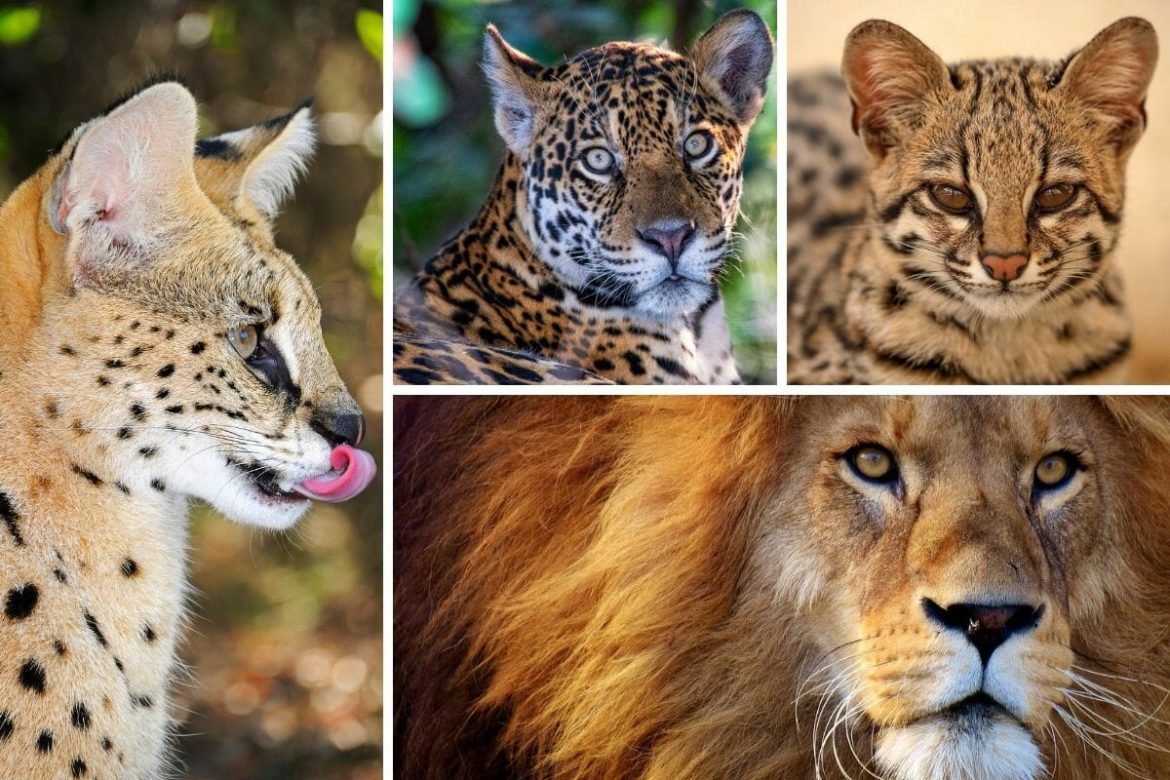Wild cats, with their elusive nature and captivating beauty, have been the subjects of fascination for wildlife enthusiasts and researchers alike. From the majestic lion to the elusive clouded leopard, the world of wild cats is diverse and intriguing. In this article, we delve into the different types of wild cats, shedding light on their unique characteristics and habitats, providing readers with a comprehensive understanding of these enigmatic creatures.
Table of Contents
- Lion (Panthera leo): The Majestic King of the Jungle
The lion, often referred to as the king of the jungle, is perhaps the most iconic of all wild cats. Found primarily in Africa, with a small population in the Gir Forest of India, lions are known for their social nature, living in prides led by a dominant male. With their distinctive manes and powerful roars, lions are a symbol of strength and majesty.
- Tiger (Panthera tigris): The Largest of Them All
The tiger, the largest of all wild cats, is a majestic and solitary predator. Tigers are native to various parts of Asia, including India, Russia, and Southeast Asia. Known for their striking orange and black striped coat, these cats are powerful swimmers and are often found near water sources. Unfortunately, many tiger species are endangered due to habitat loss and poaching, making conservation efforts crucial for their survival.
- Leopard (Panthera pardus): The Stealthy Stalker
Leopards are highly adaptable and can be found in a wide range of habitats, from the dense jungles of India to the savannas of Africa. Identified by their distinctive golden coat covered in rosette patterns, leopards are solitary hunters known for their incredible strength and agility. With the ability to drag prey twice their body weight up into trees, leopards are truly formidable predators.
- Cheetah (Acinonyx jubatus): The Speed Demon
The cheetah is renowned for being the fastest land animal, capable of reaching speeds up to 75 miles per hour in short bursts covering distances up to 500 meters. With its slender build, distinctive tear stripes on its face, and spotted coat, the cheetah is adapted for speed and agility. Native to Africa and parts of Iran, cheetahs are primarily solitary animals, relying on their incredible speed to catch prey.
- Jaguar (Panthera onca): The Stealthy Water Lover
Found in the rainforests of South America, the jaguar is the largest big cat in the Americas. Jaguars are strong swimmers and are known to hunt in the water, preying on fish and aquatic animals. Their robust build and distinctive rosette-patterned coat set them apart, making them a symbol of strength and stealth in the dense jungles they inhabit.
- Snow Leopard (Panthera uncia): The Elusive Mountain Dweller
In the high mountain ranges of Central and South Asia, the elusive snow leopard roams, perfectly adapted to its harsh environment. With its thick fur, large paws, and long tail, the snow leopard is built for navigating steep and rocky terrains. This solitary and elusive cat is listed as vulnerable, facing threats from poaching and habitat loss.
- Bobcat (Lynx rufus): The Adaptable Survivor
Native to North America, the bobcat is a medium-sized wild cat known for its adaptability to various environments, including forests, deserts, and even urban areas. Identified by its short tail with a white tip and distinctive ear tufts, the bobcat is a skilled hunter, preying on small mammals and birds. Despite their adaptability, bobcats face threats from habitat destruction and human encroachment.
- Ocelot (Leopardus pardalis): The Elegant Beauty
The ocelot, native to South America, Central America, and parts of Mexico, is a small to medium-sized wild cat known for its striking coat with distinctive spots and stripes. With a slender body and a long tail, the ocelot is an agile climber and skilled hunter. However, habitat loss and the illegal pet trade pose significant threats to their populations.
Conclusion:
Wild cats, with their diverse characteristics and habitats, contribute to the rich tapestry of our planet’s biodiversity. From the regal lion to the elusive snow leopard, each species plays a unique role in maintaining the delicate balance of ecosystems. Understanding and appreciating the different types of wild cats is not only a journey into the wild but also a call to action for their conservation. As we marvel at their beauty, let us strive to protect these majestic creatures and ensure a future where they continue to roam freely in the wild.




























































